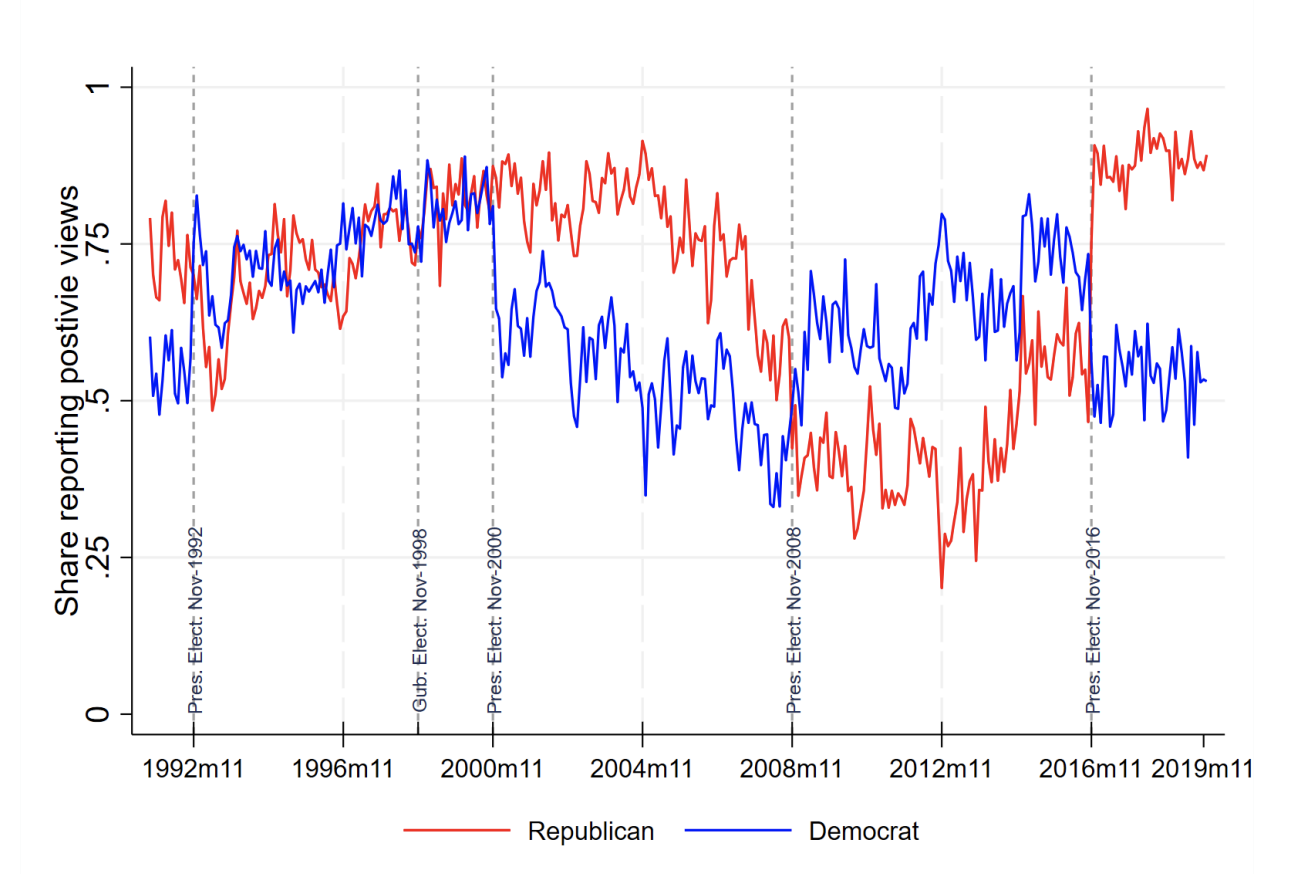New study finds a significant relationship between partisan politics and consumer sentiments
Hector Sandoval’s findings reveal that Floridian consumers exhibit greater confidence about economic conditions when their favored political party is in charge.
A new study from UF’s Bureau of Economic and Business Research (BEBR) has found that national elections have a greater impact on consumer sentiment and spending intentions than previously thought, especially during transitions of power between political parties. Led by Hector Sandoval, director of the Economic Analysis Program and research assistant professor at the Bureau of Economic and Business Research (BEBR), the study draws on years of meticulous observation and analysis of monthly sentiments data collected by the UF Survey Research Center.

Despite the wealth of data available to economics researchers, studies on these relationships are relatively uncommon. This study, according to Sandoval, is built on similar work performed in Australia back in 2018, marking the first of its kind conducted in the state of Florida.
“Consumer sentiment surveys have existed for nearly 75 years, yet the causal relationship between sentiment and consumption is mixed and scarce,” Sandoval said.
These surveys ask a range of questions, with the primary inquiry being: “Do you think now is a good or a bad time for people to buy major household items?” Following this central query, there are six additional questions probing specific major purchases, like cars, apparel, housing, etc. Sandoval and his team looked at samples of surveys from 1991 to 2019, a time period encompassing seven presidential elections and seven state gubernatorial elections.
The findings indicate a significant boost to consumer morale when their affiliated party won elections, particularly following presidential elections where there was a change in the presidential party, such as those in 1992, 2000, 2008, and 2016. As anticipated, consumer sentiments showed an inverse pattern between Democrats and Republicans. When a Democrat won the presidency, Democrats’ positive sentiments rose while Republicans’ positive sentiments declined, and vice versa when a Republican won.

While the relationship between national elections and consumer sentiment was clear and significant, the relationship between gubernatorial elections and sentiments was much harder to define. For one, there was only one party shift in the governor’s office during the time periods in which data was collected, so there was not a lot of data to work with. The results were also weak, so Sandoval was not able to determine a statistically significant relationship.
“We did, however, observe a growing partisan divide, and this trend is something worth investigating,” Sandoval explained. “Understanding why the gap between Democrats and Republicans is widening and exploring its social and economic implications are both important avenues for further research.”
In addition to looking at sentiment surveys, Sandoval also analyzed administrative data on actual spending during those time periods to investigate the effect of consumer sentiment on spending. His findings revealed that consumers kept to their beliefs, making fewer large purchases during times when their overall sentiments were low.
While Sandoval believes that all states would benefit from research like this, not every state maintains records of consumer sentiments, and among those that do, none have data going as far back as Florida’s. New York, Nebraska, and California could be the subject of future studies, as their data goes back to 2002, 2017, and 2018, respectively.
“It would be interesting to observe whether similar patterns emerge in other states, especially concerning the impact of gubernatorial elections on sentiment,” Sandoval said.
Read more about the study here.


